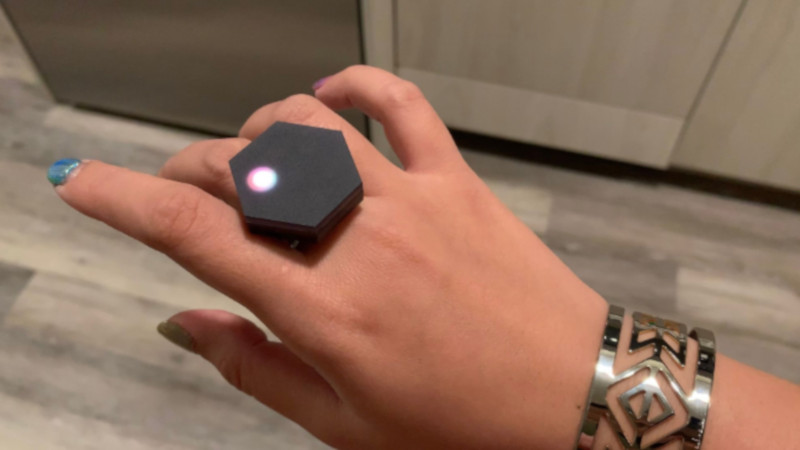LEDs look great no matter how you use them, but sometimes you want to hide them from direct view. [Charlyn] found a great way to do that, using a special material designed just for the purpose.
[Charlyn] built a ring as a piece of fashion jewelry, hooking up a Gemma M0 microcontroller to a Neopixel Jewel, which packs 7 individual LEDs. The hardware is secreted away inside an enclosure featuring both 3D-printed and lasercut parts.
Rather than openly show off the electronics, it’s all hidden away inside. Instead, a piece of black Chemcast LED acrylic is used, which allows LED light to shine through, while otherwise appearing opaque. Those interested in learning more can check out the product details on the manufacturer site.
It’s a great way to make a subtle costume piece that only reveals its flashier side when you so decide. We’ve seen badges use similar techniques on PCBs to great effect, too. Video after the break.
















That really is a gorgeous effect, looks very futuristic.
I worked at a place that got a new outdoor sign in 1996 that had a black logo during the day, and it turned white at night when the lights inside the sign turned on. I remember they made a big deal out of it when they commissioned it. It had to have been something much like this.
I wonder if a similar effect could be achieved with that perforated vinyl designed to go over bus windows.
And suddenly, hundreds of clock projects will take advantage of this method.
Just as a heads up to anyone that may be in the market for this stuff:
You can get a 1/8 x 4 x 4″ for $2 + shipping. Granted, the shipping is kind of outrageous, but if you only need a small piece to so something like the project featured in this article, it might be an easy grab rather than getting a full sheet. Not certain if they do anything special with the sample pieces, but a 1/8 x 4 x 4″ custom cut is $10 + shipping… to give you an idea.
Any chances of getting this material in Europe? some european provider?
So what’s the physics behind this “magic?” (I hate it when people explain things with that word)
Could I do the same thing with carbon black, or glitter, and a casting resin?
Anyone?
I think there’s two things going on with the “magic”. (Guessing. Don’t know)
1- The standard reason for an absorbing layer like this: if 30% of the light can get through, then the LEDs inside shine at 30% of what they would look like without it. But any light reflected has to through it twice, so reflected light is only (30%)²=9% as bright. Better contrast ratio, at the cost of absolute brightness, entirely passively.
2- The top surface is matte, so any external light is diffused to a wide number of different angles. There won’t be much opportunity for reflection from inside because the majority of the light will have been scattered away from causing glare. And some light will have been scattered to an angle such that it will be absorbed by the bulk of the material. And finally, there’s no specular reflection.
If it’s specifically “LED acrylic” perhaps it’s got colour filters, that filter out most colours except the ones LEDs emit. LEDs being pretty monochromatic. An optical notch filter. Or 3 notches.